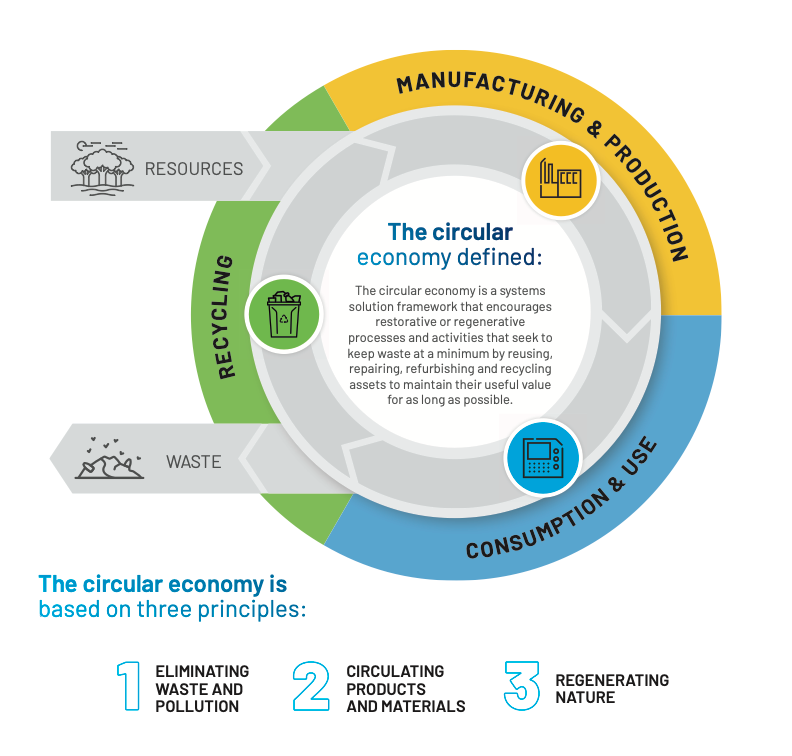With an increased focus on sustainability worldwide, companies are progressively under more pressure from their customers, shareholders and investors to “be more sustainable.” However, you may struggle to understand what that means and how it pertains to your daily activities.
Manufacturers today are understanding the critical role they play, in not only maximizing shareholder value but also doing so in a responsible manner through environmental and social engagement. Not only is this the ethical thing to do, but it also helps attract new and retain existing customers.
Regulations are growing
With corporations having such a large and sometimes global footprint, they need to understand their impact at the intersection of society, environment and business. This can be measured in several different ways.
There are two kinds of sustainability measures: voluntary and involuntary. Voluntary reporting often includes third-party auditing companies scoring and ranking sustainability efforts, which in turn can be provided to customers. This can be good marketing for companies with favorable ratings.
Sustainability organizations like EcoVadis and CDP send out these surveys yearly, with questions about energy efficiency that drill down even to the plant engineering level. Depending on the score given to a company’s sustainability management system by EcoVadis, the company may be able to promote its platinum, gold, silver or bronze rating, or a badge. A company may then take measures to improve these rankings.
Likewise, CDP is a charitable organization that runs a global disclosure system used by investors, companies, cities, states and regions to manage their environmental impacts. A scoring system is published once a year in various categories, with companies vying to be given a favorable ranking.
On the other hand, involuntary reporting moves into the realm of governmental regulation. For example, in Europe, there is legislation called Ecodesign for Sustainable Products Regulation (ESPR) that will replace the current EU Ecodesign Directive to introduce more extensive requirements for more product groups, requiring companies to report on emissions or risk being fined.
Within the United States, the U.S. Securities and Exchange Commission (SEC) has proposed a rule to require publicly listed companies to disclose a range of climate-related risks that could affect their business. This is known as the SEC climate disclosure rule.
Carbon emissions result from various sources across a company’s value chain; monitoring emissions can help a company understand its carbon footprint. Common practice is to categorize this work into three categories based on the Greenhouse Gas Protocol scope system developed by the World Resources Institute:
- Scope 1 – Direct emissions resulting from the company’s activities within its own “four walls”
- Scope 2 – Indirect emissions such as energy/utilities that are directly sourced for the benefit of the company
- Scope 3 – Greenhouse gas emissions, such as carbon dioxide, across the company’s upstream and downstream supply chain
According to this World Economic Forum report, scope 3 emissions, which account for more than 70 percent of industries’ greenhouse gas (GHG) emissions on average, represent a critical challenge. In 2024, the requirement to disclose scope 3 emissions was removed from the original draft of the SEC climate disclosure rule, but this would deviate from European Union rules that make scope 3 disclosures mandatory for large companies beginning this year, complicating compliance for some global corporations.
One way to address scope 3 emissions is to foster new value-chain relationship dynamics. There is a large opportunity to examine the supply chain and choose the more ethical and sustainable option, all things being the same.
Environmental impact and corporate reputation
Responsibility for sustainability has expanded from corporate operations to the plant floor. For example, companies who take a “fix-it-first” or “repair-first” strategy are asking their plant operators to consider sending their already owned assets back to the original manufacturer for repair or refurbishment rather than buying new ones.
Plant managers and individual contributors all work toward the company’s overall goals, and companies today are carving out new groups or organizations within their operating base to focus on sustainability. For example, from an environmental health and safety standpoint, firms may be required to report on certain metrics and operational ways of doing business.
Going beyond regulatory compliance, another important reason that sustainability matters is that as an employee, you typically work in the community in which you live. You should care about keeping the community clean and safe through reduced energy usage and carbon emissions. Resource conservation and pollution prevention provide a legacy that extends beyond the organization.
Today’s companies are more vocal in their sustainability commitment, with two-thirds of Fortune Global 500 companies making a significant climate commitment. According to ClimateImpact.com, “Reducing emissions pays off both environmentally and financially: companies that reduced reported emissions year over year earned on average nearly $1 billion more in profit per company than their Fortune Global 500 peers.”



